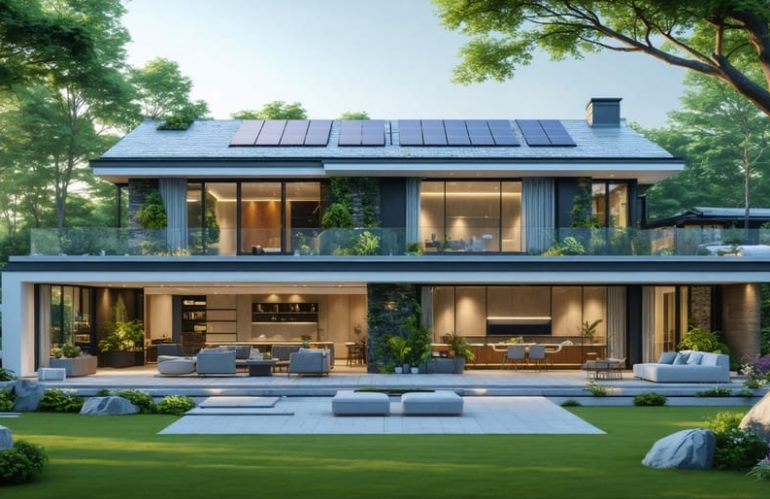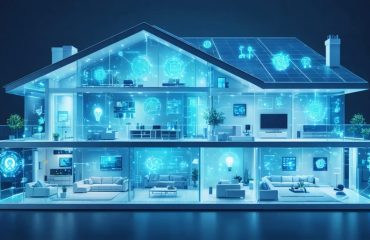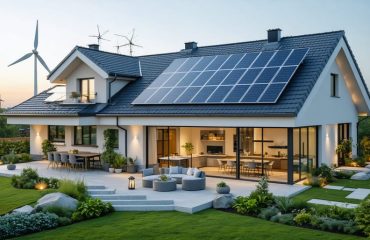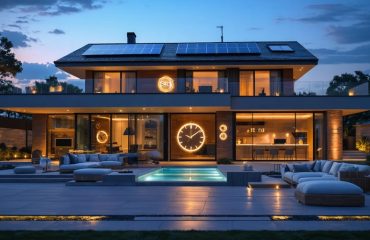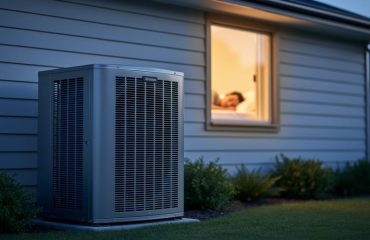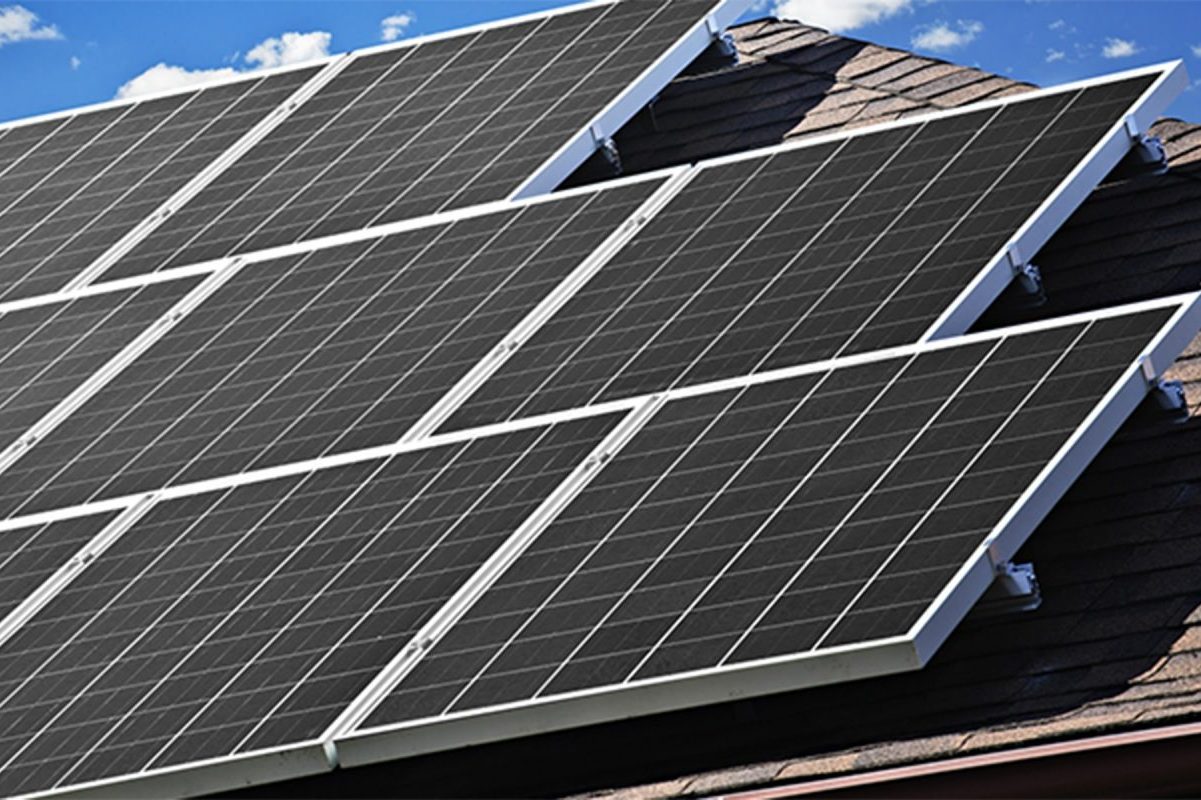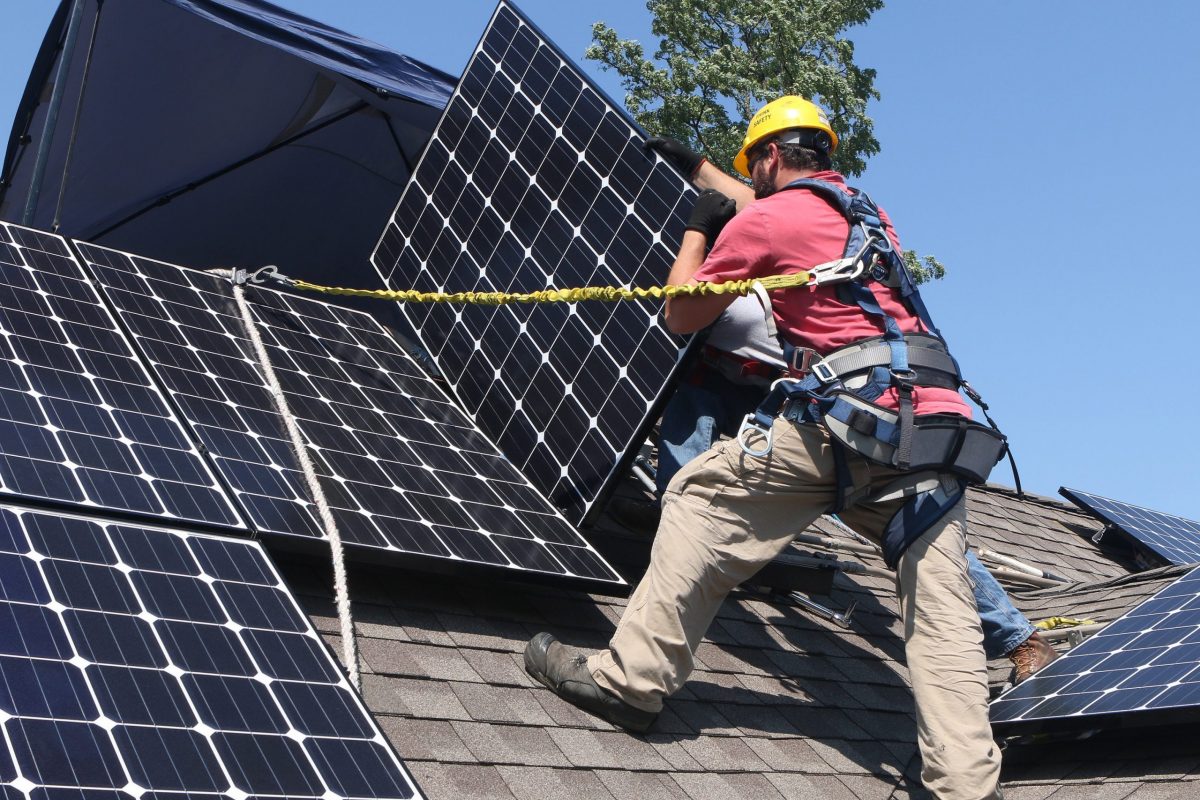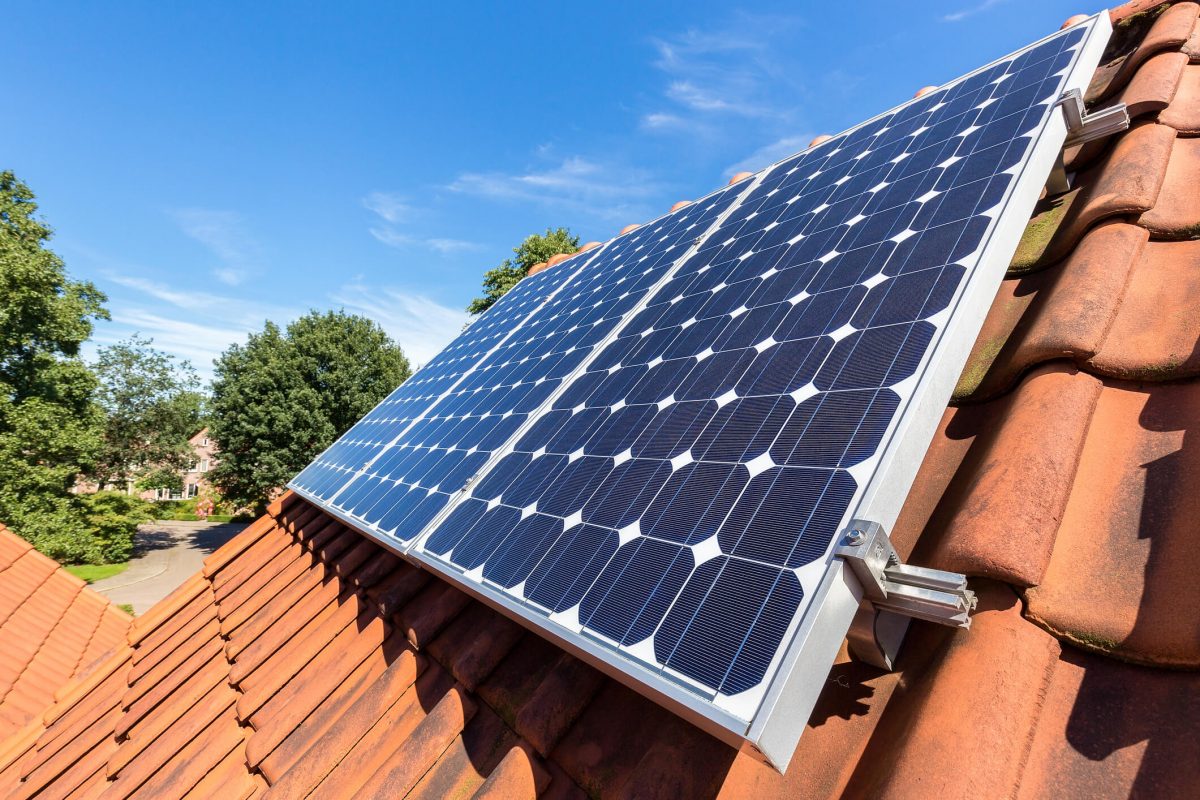Transform your home into an energy-efficient sanctuary by integrating smart design principles from the ground up. Strategic window placement, advanced insulation materials, and automated climate controls work together to optimize energy consumption while maintaining perfect comfort. Modern energy-efficient homes slash utility bills by up to 65% compared to conventional structures, combining passive solar design with cutting-edge technology to create sustainable living spaces that pay for themselves over time. Whether building new or retrofitting an existing property, implementing these design strategies not only reduces environmental impact but also creates a more comfortable, valuable, and future-proof home that meets the growing demands of climate-conscious living. The initial investment in energy-efficient design typically returns 2-3 times its value through reduced operating costs and increased property value, making it one of the smartest long-term investments for homeowners.
Smart Layout and Passive Design Elements
Strategic Window Placement
Strategic window placement is one of the most effective ways to harness natural energy in your home. By carefully positioning windows, you can maximize daylight, reduce heating and cooling costs, and create a more comfortable living environment throughout the year.
For homes in the Northern Hemisphere, south-facing windows are your best friends. These windows capture maximum sunlight during winter months when the sun is lower in the sky, helping to warm your home naturally. During summer, when the sun is higher, properly sized roof overhangs can block excessive heat while still allowing natural light to enter.
East-facing windows provide welcome morning light but should be moderate in size to prevent early-day heat gain. West-facing windows require careful consideration, as they can lead to significant afternoon heat gain in summer. Consider using smaller windows on western walls or incorporating external shading solutions like trees or awnings.
North-facing windows provide consistent, glare-free natural light throughout the day. While they don’t contribute much to solar heating, they’re excellent for creating well-lit spaces without heat gain – perfect for home offices or art studios.
In warmer climates, prioritize windows that can catch cooling breezes. Position windows on opposite walls to encourage natural cross-ventilation, reducing the need for artificial cooling. Remember that high windows or clerestories can help vent warm air while drawing in cooler air through lower openings.
Natural Ventilation Design
Natural ventilation is one of the most cost-effective ways to cool your home while reducing energy consumption. By strategically placing windows, doors, and other openings, you can create natural airflow patterns that keep your home comfortable without relying heavily on air conditioning.
The key to effective natural ventilation lies in understanding the stack effect and cross ventilation. The stack effect occurs when warm air rises and exits through upper-level openings while cooler air enters through lower openings. To maximize this effect, consider installing operable skylights or clerestory windows at the highest points of your home.
Cross ventilation works by positioning windows on opposite sides of your home to create a natural breeze pathway. For optimal results, place larger windows on the windward side of your house (the side that faces prevailing winds) and smaller windows on the opposite side. This creates a pressure difference that pulls air through your home more effectively.
Additional design elements that enhance natural ventilation include:
– Window awnings and overhangs that direct airflow
– Transom windows above doors for increased air circulation
– Strategically placed interior walls that guide air movement
– Vented cupolas or ridge vents in the roof
– Screen doors and security screens that allow nighttime ventilation
Remember to consider your local climate patterns and seasonal wind directions when planning your ventilation strategy. Well-designed natural ventilation can reduce your cooling costs by up to 50% while improving indoor air quality and creating a more comfortable living environment.
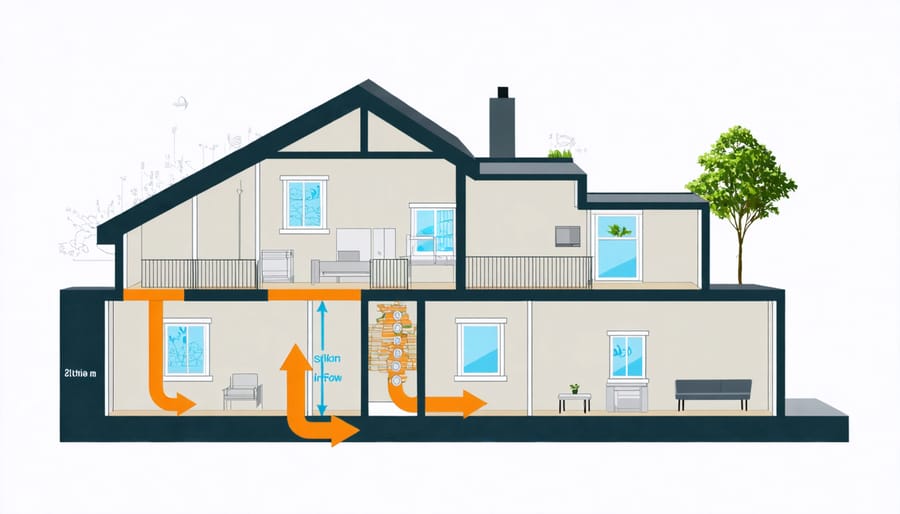
High-Performance Building Materials
Advanced Insulation Solutions
Modern insulation technologies have revolutionized how we keep our homes comfortable while minimizing energy waste. Today’s advanced solutions go far beyond traditional fiberglass batts, offering superior performance and energy savings that can dramatically reduce heating and cooling costs.
Spray foam insulation leads the pack in effectiveness, creating an airtight seal that prevents thermal bridging and can reduce energy bills by up to 50%. This expandable foam fills every crack and crevice, providing both insulation and air sealing in one application. While initially more expensive than traditional options, its long-term energy savings and durability make it a smart investment.
Vacuum insulated panels (VIPs) represent the cutting edge of insulation technology, delivering exceptional R-values in ultra-thin profiles. These panels are ideal for areas where space is at a premium but maximum insulation is needed, such as in walls adjacent to zero-lot-line properties or in renovation projects with strict space constraints.
Aerogel insulation, originally developed for spacecraft, is now available for residential use. This lightweight material offers outstanding thermal resistance and is perfect for challenging areas like window reveals and door frames where traditional insulation materials might be impractical.
Phase change materials (PCMs) represent another breakthrough, actively absorbing and releasing heat to maintain consistent indoor temperatures. These materials can be incorporated into wall systems or ceiling tiles, reducing the load on heating and cooling systems while improving comfort.

Energy-Efficient Windows and Doors
Windows and doors play a crucial role in your home’s energy efficiency, acting as both barriers and regulators of heat transfer. Modern energy-efficient windows feature double or triple-pane glass filled with insulating gases like argon, significantly reducing heat loss compared to single-pane alternatives. Look for windows with low-E coatings, which reflect heat while allowing natural light to pass through, keeping your home cooler in summer and warmer in winter.
When selecting windows, pay attention to the U-factor and Solar Heat Gain Coefficient (SHGC) ratings. Lower U-factor numbers indicate better insulation, while SHGC determines how much solar heat enters your home. For cold climates, choose windows with a U-factor below 0.30, while warmer regions benefit from a lower SHGC rating.
Energy-efficient doors, particularly those made with materials like fiberglass or insulated steel, provide superior thermal protection compared to traditional wooden doors. Look for models with tight weatherstripping and adjustable thresholds to prevent drafts. For glass doors, consider the same energy-efficient features as windows.
Proper installation is just as important as the products themselves. Even the most efficient windows and doors won’t perform well if they’re not correctly sealed and installed. Consider professional installation to ensure optimal performance and to maintain warranty coverage. While energy-efficient windows and doors may cost more initially, they typically pay for themselves through reduced energy bills and increased home comfort.
Smart Energy Systems Integration
Solar Power Integration
Solar power integration has become increasingly accessible and affordable for homeowners, making it a cornerstone of energy-efficient home design. The key to successful solar implementation starts with proper roof orientation – ideally facing south in the Northern Hemisphere – and ensuring an optimal tilt angle between 30-45 degrees for maximum sun exposure.
Before installation, conduct a thorough solar assessment of your property to identify the best locations for panels and determine potential energy generation. Consider factors such as shade from nearby trees or buildings, local weather patterns, and roof structural integrity. Modern solar panels can be seamlessly integrated into various roof types, including traditional shingles, metal roofing, or even as solar tiles that blend with your home’s aesthetic.
To maximize your solar investment, pair the system with smart energy storage solutions like home batteries. These allow you to store excess energy generated during sunny periods for use during nighttime or cloudy days. Many homeowners also opt for hybrid systems that maintain grid connection while prioritizing solar power usage.
Consider starting with a smaller system that can be expanded later. This approach allows you to test the benefits while managing initial costs. Many regions offer tax incentives, rebates, and solar financing options that can significantly reduce installation expenses. Working with certified solar installers ensures proper system sizing and installation, maximizing both energy production and long-term savings.
Smart Home Energy Management
Smart home automation systems have revolutionized the way we manage household energy consumption, offering both convenience and significant savings. These intelligent systems use a network of connected devices and sensors to optimize energy usage automatically, reducing waste while maintaining comfort.
A central smart thermostat serves as the foundation of an effective energy management system. These devices learn your preferences and daily routines, automatically adjusting temperature settings to minimize energy use during peak electricity hours or when rooms are unoccupied. Many models can be controlled remotely via smartphone apps, allowing you to make adjustments even when you’re away from home.
Smart lighting systems with motion sensors and automated schedules ensure lights are only on when needed. These can be integrated with smart blinds that adjust throughout the day to optimize natural light and heat gain. Energy monitoring systems provide real-time feedback on consumption patterns, helping you identify opportunities for additional savings.
For maximum efficiency, consider implementing smart plugs and switches that automatically power down electronics when not in use, eliminating phantom energy drain. Some systems can even coordinate with your utility company’s demand response programs, automatically reducing consumption during high-demand periods in exchange for reduced rates.
The initial investment in smart home technology typically pays for itself through reduced energy bills within two to three years, while providing enhanced comfort and convenience for years to come.
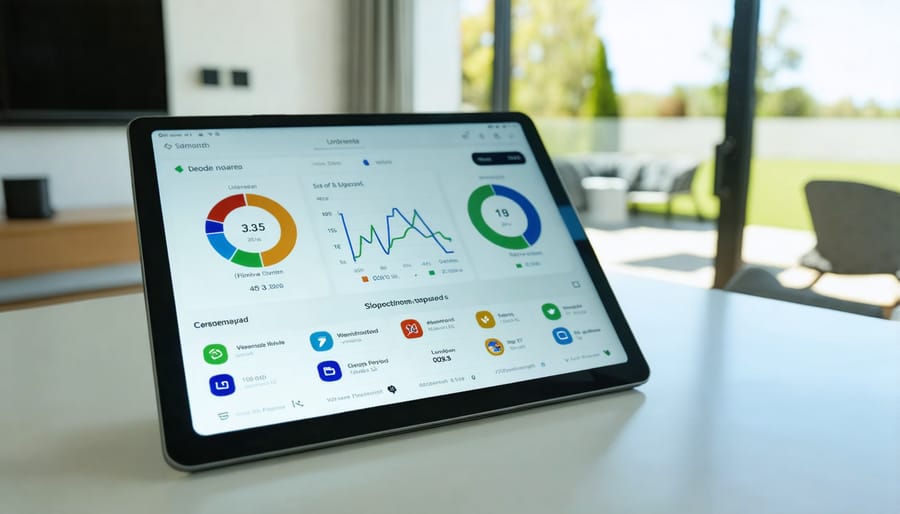
Cost-Effective Energy Solutions
Budget-Friendly Efficiency Upgrades
Transforming your home into an energy-efficient space doesn’t always require massive investments. Several budget-friendly upgrades can lead to substantial savings on your energy bills. Start with LED lighting throughout your home – while slightly more expensive upfront, these bulbs use 75% less energy and last 25 times longer than traditional incandescent bulbs.
Installing programmable thermostats is another cost-effective upgrade that typically pays for itself within a year. Combined with smart energy timing, these devices can reduce your heating and cooling costs by up to 10%.
Weather stripping and door sweeps are inexpensive yet effective solutions for preventing air leaks. For just a few dollars per window or door, you can significantly reduce heating and cooling losses. Similarly, adding insulation to your hot water pipes costs little but helps maintain water temperature, reducing heating needs.
Consider installing low-flow faucet aerators and showerheads, which can cut water heating costs while maintaining good water pressure. Smart power strips are another affordable addition that eliminate phantom energy usage from electronics in standby mode.
Don’t overlook simple DIY tasks like sealing air ducts with mastic sealant or metal-backed tape, which can improve HVAC efficiency by up to 20%. Even basic maintenance like regularly changing air filters and cleaning vents can lead to meaningful energy savings without breaking the bank.
Long-Term Savings Calculator
Understanding the long-term financial benefits of energy-efficient home design starts with a systematic approach to calculating potential savings. To accurately estimate your return on investment, consider these key factors: initial costs, annual energy savings, utility rate trends, and available tax incentives.
Start by documenting your current energy usage and costs as a baseline. Then, use online calculators or consult with energy professionals to estimate how specific improvements could reduce energy costs. For example, upgrading to energy-efficient windows typically saves 10-25% on heating and cooling bills, while proper insulation can cut energy costs by 15-30%.
To maximize your returns, prioritize improvements with the shortest payback periods. Generally, insulation, air sealing, and smart thermostats offer the quickest returns, often paying for themselves within 2-3 years. Larger investments like solar panels or geothermal systems may take 5-10 years but provide substantial long-term savings.
Don’t forget to factor in increasing energy rates (averaging 2-3% annually) when calculating future savings. Also, research available incentives – federal tax credits, state rebates, and utility company programs can significantly reduce your initial investment and improve return rates.
Keep detailed records of your energy bills before and after improvements to track actual savings and adjust your strategy accordingly. This data-driven approach ensures your energy-efficient investments deliver maximum financial benefits over time.
Energy-efficient home design represents more than just a trend – it’s a smart investment in our future that benefits both the environment and your wallet. Throughout this guide, we’ve explored various strategies that can transform your home into an energy-saving powerhouse, from passive solar design principles to cutting-edge insulation techniques and smart home technologies.
Remember that every energy-efficient feature you implement contributes to significant long-term savings. Whether you’re building a new home or retrofitting an existing one, start with the basics: proper insulation, strategic window placement, and efficient HVAC systems. These foundational elements create the perfect platform for incorporating advanced features like solar panels, smart thermostats, and energy-efficient appliances.
The beauty of energy-efficient design lies in its flexibility – you can implement changes gradually, starting with cost-effective solutions and progressing to more substantial investments as your budget allows. Don’t forget to explore available tax incentives and rebates that can help offset initial costs.
By embracing these design principles, you’re not just reducing your carbon footprint; you’re creating a more comfortable, valuable, and sustainable living space. Take the first step today by assessing your home’s current energy performance and identifying areas for improvement. The path to energy efficiency is a journey worth taking, promising returns that benefit both your household and the planet for years to come.

